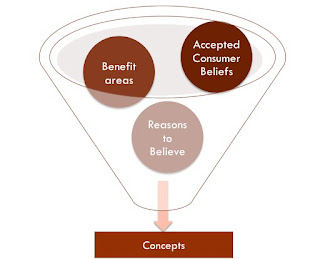I recently had the opportunity to attend my first Southwest chapter MRA Educational Forum. I was lucky that the conference was held close to home - in Fort Worth, TX - and loved how they tied in the Texas theme by calling the conference “Research Roundup”.
The keynote speaker at the event was Brett Townsend, Director of Insights at Pepsico. He started his presentation with a humorous, yet scrambled and confusing story in order to provide a basis for his argument - more and more CEO’s don’t see the value that marketing and/or research provide their organizations. The main challenge he sees today is that both suppliers and clients present too many findings vs. summarizing the finding in a useful story, causing decision makers to miss true insights. Considering my role of writing reports here at April Bell Research Group, I definitely wanted to understand why this seems to be a recurring theme and how we, as a supplier, can help our clients by presenting clearer findings.
From Brett’s perspective, in order to cull through insights and report the clearest story back to our clients we need to understand: What is the goal of insights? Yes, we hope to increase sales or improve a product’s performance, but the real goal is to CHANGE BEHAVIOR. And, according to Brett, in order to change behavior, we need to do the following:
- Understand who and what drives demand.
- Tell consumers why they should be buying your product.
Understanding what and who drives demand seems simple, but even as researchers we don’t always get this right. Brett explains that consumers will do 1 of 3 things when questioned (no matter the subject): 1) they answer correctly, 2) they can’t answer correctly so they answer incorrectly, or 3) they won’t answer. So by having a clearer understanding of demand we can increase the quality of respondents and learnings we gather. An example Brett shared with the group was a Jimmy Kimmel skit. A week before the Super Bowl, Jimmy went to Hollywood Blvd and asked people what they thought about the outcome. You’ll see in the skit, even if people are unsure of their answers, they want to come across as knowledgeable and will tell you what they think you want to hear (even if that means lying about their answer).
The second step to changing behaviors involves telling consumers why they should buy the product. Brett showed us a great example of how Gatorade does this by showing the compelling story of how Gatorade improved Kevin Durant’s basketball performance.
I really enjoyed Brett’s presentation and will keep these 2 factors top of mind - 1.) understanding who and what drives demand and 2.) ensuring consumers know why they should be buying your product - the next time we present learning to our clients. By doing so, I hope to clear the clutter and provide our clients with insights that will help change behaviors (and ultimately make happy CEOs!).












